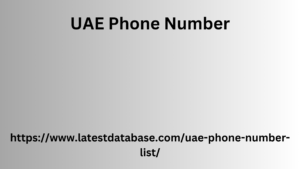|
|
Post by account_disabled on Mar 11, 2024 6:01:32 GMT
INDEX What does SWOT mean? What is the SWOT analysis for? How does SWOT analysis work? How do you create a SWOT matrix? What does SWOT mean? SWOT stands for Strengths, Weaknesses, Opportunities and Threats. In Italian it is translated as strengths, weaknesses, opportunities and threats . What is the SWOT analysis for? The main objective of the SWOT analysis is to find the right decisions , i.e. to identify and implement the right strategies that help a business improve and successfully achieve its KPIs . Through the SWOT analysis you evaluate the pros and cons, possibilities and obstacles to achieving your goals. You can then use the SWOT analysis to make the most of what you have, to the benefit of your business. At the same time, you can reduce or keep the chances of failure under control by UAE Phone Number understanding your shortcomings in advance and anticipating threats that would otherwise catch you off guard. Better yet, you can undertake a strategy that distinguishes a business from its competitors , and thus successfully compete in its market share. The SWOT analysis is useful if performed regularly, such as once a year . This allows you to recognize changes within your business or market early so you can adjust your strategy. How does the SWOT analysis work? SWOT analysis, also known as SWOT matrix, evaluates the internal and external factors of a business.  meaning-swot-analysis Through the SWOT analysis, strengths and weaknesses ( internal factors in a business) can be identified together with opportunities and threats ( factors external to a business). After initial observations, the results are reported and compared in a matrix, so that the most appropriate strategies can be developed and put into practice. The SWOT analysis is simple and very flexible, and therefore lends itself to all types of businesses. Internal factors: identify strengths and weaknesses Strengths are those factors internal to a business that have a positive impact. These include, for example, brand awareness, financial strength, access to necessary resources and technological expertise. |
|